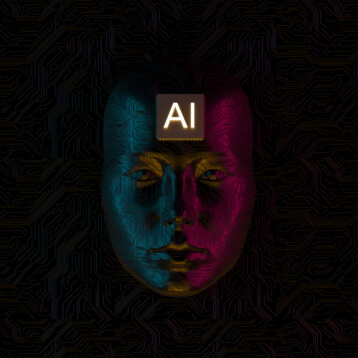Scientists from IBM and five university partners will head a US government-funded collaboration to create electronic circuits that mimic brains. Their ultimate goal will be to understand the complex wiring system of the brain and to build a computer that can simulate and emulate the brain’s abilities of sensation, perception, action, interaction and cognition while rivaling its low power consumption and compact size.
 |
IBM’s artificial neural network
illustration (Credit: IBM) |
|
This impressive research endeavor is termed ‘cognitive computing’ and will incorporate the knowledge of neurobiologists, computer and materials’ scientists and psychologists. Realizing the potential of the application that could be utilized for large-scale data analysis, decision making or even image recognition, the Defense Advanced Research Projects Agency (DARPA) is funding what is known as the SyNAPSE program with a $4.9 million grant.
The final objective of this venture is a system that has the complexity level of a cat’s brain. “The mind has an amazing ability to integrate ambiguous information across the senses, and it can effortlessly create the categories of time, space, object, and interrelationship from the sensory data,” says Dharmendra Modha, the IBM scientist who is heading the collaboration. “There are no computers that can even remotely approach the remarkable feats the mind performs,” he said. “The key idea of cognitive computing is to engineer mind-like intelligent machines by reverse engineering the structure, dynamics, function and behavior of the brain.”
Observing and testing simple animals, neuroscientists have perfected the theory of the
neurons and the
synapses that connect them, producing ‘wiring diagrams’. Using this information, computer scientists were able to create a supercomputer by simulating these ‘wiring diagrams’. In 2007, Modha and his team successfully created a supercomputer named
BlueGene which was able to simulate a mouse’s brain. The system consisted of 55 million ‘neurons’ and some half a trillion synapses.
 |
IBM to develop a cat-like brain
for DARPA (Credit: IBM) |
|
Modha adds that only recently has the technology increased sufficiently to match the density of neurons and synapses in real brains – around 10 billion to one square centimeter. This technology makes problem solving potentially limitless. In other words, these supercomputers could free computers from the constraints of explicitly programmed functions. The computer would collect incongruent data and evaluate the data based on previous occurrences. This would then be formed into a class of memory, and the computer would naturally perform decisions based on the process of what we humans call thinking.
The difference between the current programmed computer and the future DARPA SyNAPSE supercomputer is that human derived algorithms programmed into current computers are bounded by their computational ability and also by the need to forcefully feed the computer data from the environment. However, the new system hopes to develop an autonomous processing center, similar to a brain – also known as a
biological neural system. This ‘brain’ would be able to instinctively learn relevant and probabilistically stable features and associations.
The final result would involve every computer being produced with this new intelligence, which accepts and integrates data from an array of sensors and sources and deals with uncertainty. The average users’ computer would learn over time and perform pattern recognition to unravel complex problems centered on perception, action and cognition in complex, real-world environments.
While this might sound as if science fiction is turning into science fact, the project has just taken off and many more years of R&D are required to make the system a success.
TFOT has previously written about The New ‘Chatter Box’, a powerful super computer that will try to mimic the part of the brain that controls speech and language functions. TFOT also covered DARPA’s Super Scope – a new high resolution scope technology that will extend the range of viable image recognition and reduce atmospheric interference.
Additional information on the SyNAPSE program can be obtained at IBM’s
website and IBM’s Research
website.












